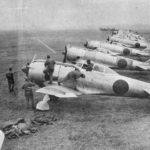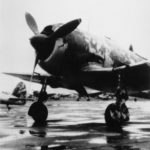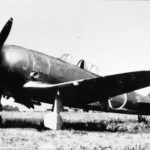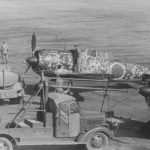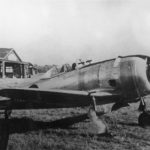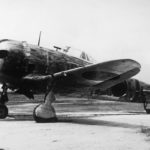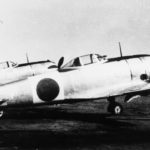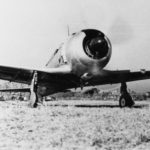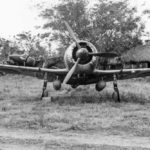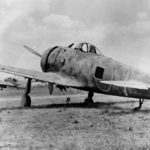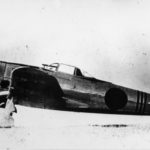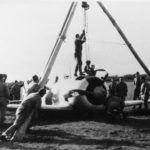Ki-44 fighters of the 47 Sentai, Chofu near Tokyo 1943
Ki-44 Shoki of the 47 Sentai 1944
Ki-44 #93 Japan 1943/44
Ki-44 Shoki Tojo
Nakajima Ki-44-II Otsu
Ki-44 at Akeno Flying School
Ki-44 wreck
Prototype Ki-44-III at Fussa 1943
40mm Hu-301 on Ki-44 IIb 1945
Ki-44-II serial 1134 of the 85 Sentai, Hankou China 1943
Ki-44 Shoki from Akeno Flying School, 1944
Captured Ki-44 IIb of the 246 Sentai at Clark Field 1945
Captured Ki-44 Oppama Japan 1945
Ki-44 is prepared for takeoff
Captured Nakajima Ki-44-IIb 1945
Ki-44 of the IIb 22 Sentai Clark Field February 1945
US Shoki “TAIC S 11” Clark Field Philippines 1945
Ki-44 IIb from 246 Sentai Clark Field 1945
Ki-44-III Yokota
Crashed Ki-44
Ki-44 Shoki Captured in Japan 1945
The Ki-44 Shoki (鍾馗、”Demon”) was a single-engined fighter aircraft used by the Imperial Japanese Army Air Force in World War II, first flying in August 1940 and entering service in 1942. The Allied codename was “Tojo”; the Japanese Army designation was “Type 2 single-seat fighter” (二式単座戦闘機).
In contrast to its predecessor, the nimble Ki-43, the Ki-44 was designed for speed and climbing ability, and was used to intercept high-flying B-29 bombers. With its poor visibility on the ground, weak armament, and high landing speed, it was generally disliked by pilots; its oversized engine and diminutive tail made it one of the more unattractive aircraft of its class.
This fighter once equipped twelve sentais of Japanese squadrons (9, 22, 23, 29, 47, 50, 64, 70, 85, 87, 104, 246) encountered in action before replacement with Nakajima Ki-84 ‘Franks’ for the final battles of the war. Manchoukouan Air force received some examples of these airplanes during wartime.

